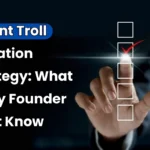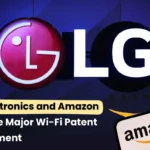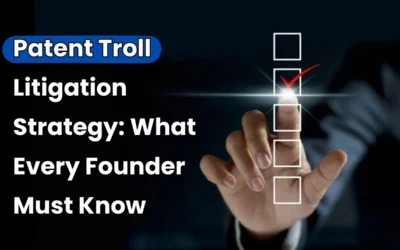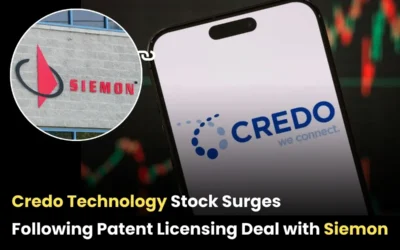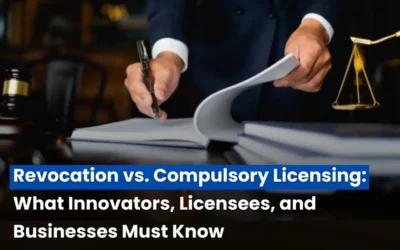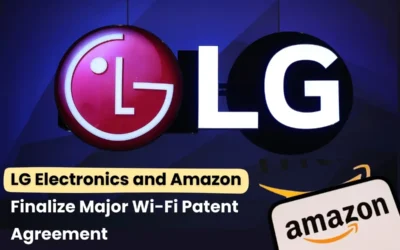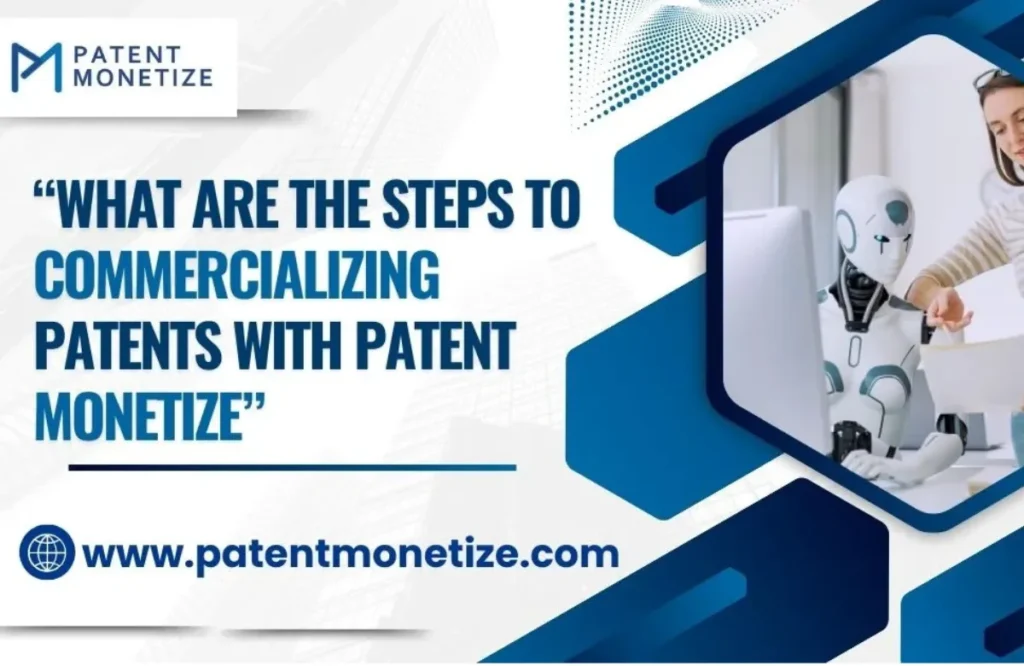
Patent commercialization forms one of the milestones that all the inventors, a small business company, and any other undertaking firm have against their patents. Of themselves, patents are unique IPR products. This can now achieve full exploit only through effective systematic commercialisation. This would then mean existence of patent monetization steps needed to monetise a patent. Patent monetization can be described as exploitation of a patent towards some form of financial gain such that this takes either licensing and a direct selling format or maybe co- partnership undertakings. Through right patents monetizing techniques towards their industrialization you enjoy the produce for your creation hence turning into wealth-generating goods.Then, it explains Steps to Commercializing Patents through patent monetization and explains what companies that focus on patent monetization do in order to make sure the process runs with much smoothness and is completed effectively.
An introduction to the basic principles of patent commercialization and monetization
Before carrying out some light on the commercialization of patents, one needs to understand what “commercialization” and “monetization” are. Both terms are often used synonymously, but they differ a little in meaning.
- Patent Commercialization: Refers to taking your patented invention to market. This may be achieved through the sale of patent rights, licensing the patent, or through collaboration with companies that are interested in using your invention.
- Patent Monetization: This is the revenue side of commercialization. That is, generating cash or revenues from a patent. Here, the revenue or profit can be realized either by a licensing agreement, selling of patents, or developing a business based on patented technology.
Assess your Patent’s Market Opportunity
Market Potential Analysis of your Patent
All patents are not equal. Not all inventions can be of a similar potential that can create much interest in terms of commerce. Some of the most relevant factors to find a market include the following discussion:
- Market Demand: Does the invention create a demand in the market? Does your technology solve an existing problem or make something better, which is working?
- Target Market: Who will benefit from the patented invention? Will it benefit the consumers, companies, or the industry?
- Competitive landscape: What is the product and patents that compete with your innovation? Where will your innovation find a niche?
- Profitability: How much can be charged through the licensing fee or possibly selling the patent? Is there a potential profit in the patented invention?.
This calls for the fact that you will be in a good position knowing what measure to be used in terms of monetizing strategy, even the decision of either licensing the patent to some other companies or to sell it cash. Analyses on the Potentials of a Patent in the Marketplace
Strengths and Value Analysis
With some level of commercial significance, there will be some commercially viable strength capable enough to embark. Patentable strength speaks literally about the type of enforceability through courts or to the protecting scopes of such a patent of interest. Needless to say all patents cannot always carry the equal weightage sometimes one or the other might become even costlier in nature when compared with those others. How much such quantification behind this patent works totally depends upon plenty of factors like
- How wide is the scope of patent protection: As broad as all possible applications mean that particular patent will gather more commercial value.
- Patent Validity: How powerful would be the patent in resisting tests? Those patents that successfully survived litigation can even go beyond the battle line of legal test.
- Value to the licensed or sold patent: Is there value to the patented invention to the potential licensees or buyers? An invention that meets the perceived gap in the market more easily draws attention.
Knowledge of the value of the patent on hand helps in negotiating over licensing agreements or selling the patent at a profitable price.
Choosing the best patent monetization strategy
From which perspective your patent presents in the market and its worth, you will be called to make the best decision on which monetizing strategy to pick. Truth be told, there are ways of monetizing patents and each will have its disadvantage other than the advantages.
Licensing: Licensing gives other people permission to use your patented invention either for royalties or as a single fee. Here you would be termed to own the patent and earn money from it. There are major types of licensing agreement that can be categorized into two.
- Patent Licensing: The licensee enjoys an exclusive right to the usage of the patent over a stipulated area or market. The inventor usually attracts a higher percentage for royalties, for this purpose.
- Non-exclusivity License: The right to the patented invention may be licensed to different licensees as many licensees but at lower royalty rate for each agreement.
Patent Sale– It is a one-time transaction in which the owner of the patent transfers his wholly rights over the patent for cash. The former is paid upon taking that decision. It’s fast but a lifelong process, and you never regain your rights to the patent once you sell it.
Joint ventures: All the inventors have gone to joint ventures with other firms well capitalized in terms of finance and resources meant for the production of the commodity. This most of the times entails collaboration to produce and sell the commodity.
Assertion: Patent rights is asserted at the filing of a case or when settling in a discussion. For those who actually own extremely huge portfolios in patents, patent assertion can very well be a popular function to make a procuring settlement, getting royalty from infringement companies.
All of them have their pros and cons and will depend on the inventor’s wants or has: resources and the extent to which he or she is willing to take risks. You can benefit from the services of a patent monetization company that could guide you through decision-making, even indicating the right strategic approach suitable for your given situation.
Formulate a Patent Commercialization Plan
Once you decide on the monetization strategy, you will have to formulate a patent commercialization plan. A well-structured plan describes the actions you would undertake in marketing and commercializing your patent. The components of a commercialization plan include:
- Market Research: Identify the relevant industries and firms that can leverage your patent. Who are the potential customers for your technology and what is the willingness to pay?
- Competitive Analysis: Identify the competitors, those who have patents or products that are similar in the market.
- Marketing and Outreach: Prepare materials, such as presentations, brochures, and technical documents, that describe the value of your patent. Reach out to potential licensees, investors, or business partners.
- Patent Attorney and Financial Advisors: Consult these for the right advice on your protection of the intellectual property so that licensing agreement or patent sales could be well planned for your convenience.
This also facilitates proper organization and focused moves as one moves through the process of commercialization.
Patent Monetization Firms
This is something that greatly simplifies the steps toward patent commercialization. Patent monetization firms are specifically designed to help inventors, startups, and companies to extract monetary value from their intellectual property. Patent monetization firms usually provide services such as:
- Patent valuation: Calculating the monetary value of your patent taking into consideration the market for your invention and expected license revenue among other factors.
- Licensing and Negotiation : Licensing firms are negotiating licensing agreements or can assist in getting the best licenses.
- Marketing : The firms have always had an established network and thus can also be useful in marketing a patent to licensed buyers or buyer.
- Litigation Support: Various patent monetizing companies assist clients in patent litigation, which is the act of filing a complaint against firms that are breaching the granted patent.
Tap on the experience and resources of a patent monetization company and enhance the chances of achieving the commercialization of your patent.
Patent Licensing Agreement/Patent Sales Negotiation
One of the most sensitive steps for patent commercialization is the patent licensing agreement, which dates back to sale negotiation. If you are licensing your patent or selling it outright, everything will depend on what you agree to.
Things to consider:
- Licensing Agreement: it refers to the agreement in which the licensor mention the rights and power of the licensee
- Royalty Rates: What percent of sales or revenues will you get from the licensee?
- Territory: Where will the patent be used? Will the licensee have exclusive rights within certain geographic regions? o Duration: How long will the license last? Will it be renewable? o Upfront Payments: In some cases, you may receive an upfront payment in addition to ongoing royalties. • Patent Sale: The buyer will pay a lump sum for the ownership of the patent. Consider the following in the sale:
- Patent Price: Your selling price must be according to the market price and its revenues.
- No Terms of Transfer: All the transfer terms should clearly be stated: the date upon which the deal is to come into effect as well as how many rights to be transferred are involved.
Try to involve lawyers in your bargaining so that what you agree with is just right and that nothing goes against you.
8. Monitor and Manage Your Patent Portfolio
Once a patent has been commercialized, it becomes crucial to continue monitoring and managing the patent. This will help keep your patents as valuable assets and manage all agreements that run on a yearly basis. Key tasks include;
- Tracking Revenue: Maintain records on licensing royalties as well as income that accrue from the patented item.
- Patent Maintenance: Pay on time all applicable patent maintenance fees so as not to allow patents to lapse
- Patent Enforcement: When someone infringes on your patent rights, take steps necessary to establish legal rights against that infringer
Through this management of patents, you attain the optimal long term profitability of technology that you have patented.
Conclusion:
How to Make Patents Come Alive with Patent monetization, or commercializing patents, is a long process that requires strategic planning in doing research and must be approached cautiously. Of course, this depends on your complete understanding of the value of your patent, appropriate monetization techniques, and proper interaction with the patent expert. Be it licensing or outright patent selling or entering into a joint venture, a patent monetization company facilitates the completion of processes and drawing the maximum amount from their patents.
